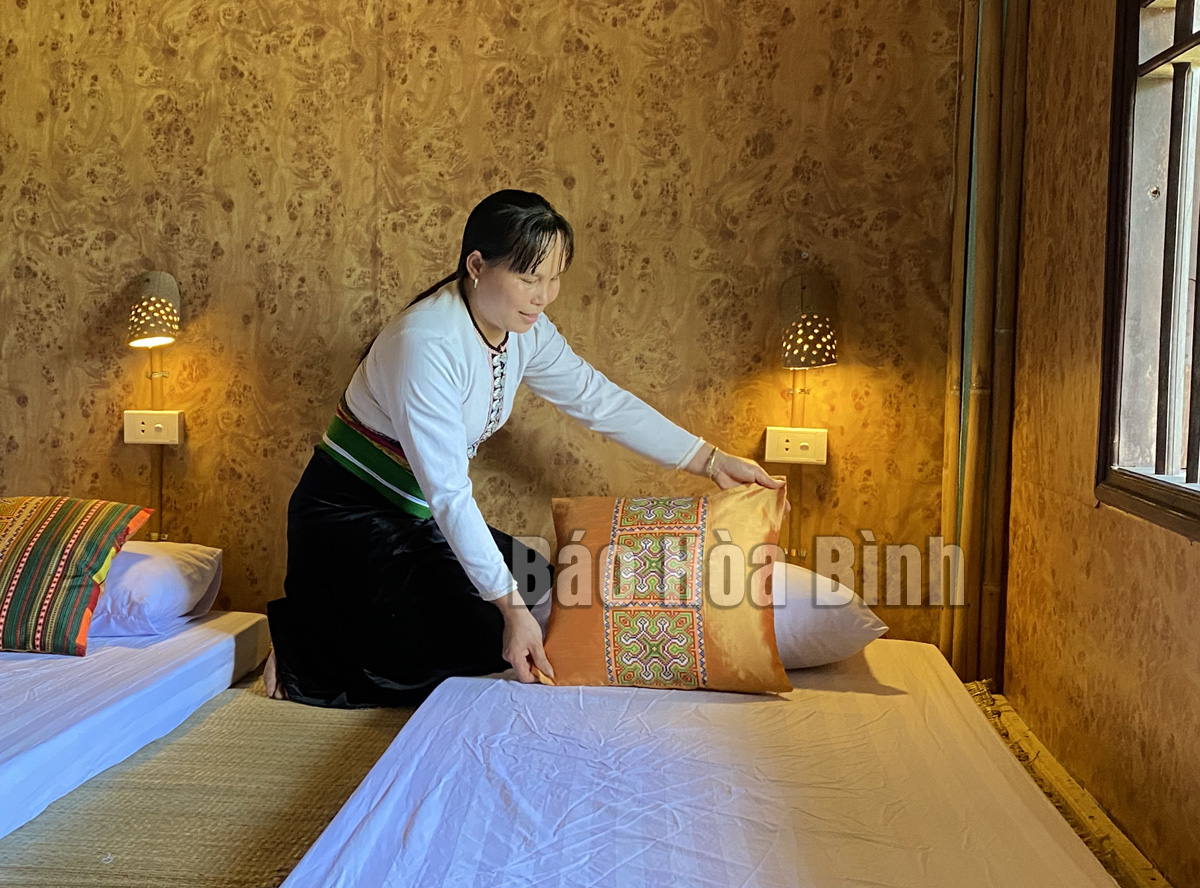
(HBO) - The pristine and magnificent beauty of the landscape, adorned by the simplicity and charm of the villages of Muong, Dao, and Tay ethnic groups, never fails to captivate tourists whenever they visit the Hoa Binh Lake Tourism Area.

Tourists experience kayaking on Hoa Binh Lake.
Hoa Binh Lake is the largest man-made in Southeast Asia, with a length of about 70 kilometres, spanning across 17 communes in five districts and the city of Hoa Binh province. It is home to hundreds of islets, with limestone mountain ranges, and a system of caves with countless stalactites, creating a surreal and colourful landscape. The lake also boasts small bays and is surrounded by forests teeming with diverse fauna and flora. In addition to the breathtaking natural beauty, there are traditional ethnic minority villages that have preserved their cultural values. All of these factors provide perfect conditions for the development of tourism in the area.
Over the past years, to promote tourism development in the area, the province has invested in essential infrastructure. Locals have also paid attention to preserving and promoting their traditional cultural values. To embark on a trip to the area, tourists can start at different locations. The closest to the centre of Hoa Binh city is Bich Ha Port, located just behind the Hoa Binh Hydroelectric Plant, making it convenient to welcome tourists. Additionally, there are docks like Bai Sang (Mai Chau) and Hien Luong (Da Bac), from which tourists can explore the lake.
Tourists can drive 25 kilometers northwest of Hoa Binh city to explore the lake area, starting from Thung Nai Port in the commune of the same name in Cao Phong district. Here, they can stay in Coi Xay Gio (Windmill) Guesthouse, Dao Dua (Coconut Island), and Dao Ngoc Xanh (Emerald Island).
According to local authorities, there are more than 100 accommodation establishments and approximately 300 passenger transportation vehicles at the Hoa Binh Lake Tourist Area. Furthermore, there are two stunning resorts - Mai Chau Hideaway and Ba Khan Village Resort.
Last year, the tourist site welcomed 400,000 visitors, and the number is expected to reach 500,000 annually.
Located just a 20-minute drive from Hoa Binh City, Ora Hill Farmstay & Glamping Hoa Binh is a captivating new destination nestled in Mo hamlet, Bình Thanh commune, Cao Phong district. Combining farming with leisure, this tranquil retreat is perfect for those seeking balance, joy, and an immersive experience in the expansive beauty of nature.
Muong Bi - Tan Lac is renowned as one of the four famous Muong regions in Hoa Binh province. Blessed by nature with a favourable climate and stunning landscapes, Tan Lac holds great advantages for tourism development. The local tourism industry has made remarkable strides in recent times thanks to the attention and support from the local authorities and sectors.
With its strategic location, well-developed transport network, and diverse soil and climatic conditions, Hoa Binh is emerging as a must-visit destination in Vietnam's northwestern tourism corridor. The province boasts numerous attractions, including the Kim Boi hot springs (Kim Boi district), the Dau Rong cave complex (Cao Phong), the Mai Chau valley (Mai Chau), and the iconic Hoa Binh hydropower plant.
The northern mountainous province of Hoa Binh has been listed among the 71 most beautiful places to visit worldwide by the prestigious US travel magazine Condé Nast Traveller.
Hoa Binh province’s rich natural and cultural resources position it as a prime location for developing community-based tourism (CBT). In recent years, support from central and provincial policies, as well as assistance from non-governmental organisations, have encouraged local ethnic minority and mountainous communities to actively engage in the sector.



